- Home
- Clive Cussler
Zero Hour nf-11 Page 6
Zero Hour nf-11 Read online
Page 6
“And me without my tinfoil hat,” Kurt said.
He glanced down at the arrangement of parked cars, thinking about the dead geese found near the Berkeley Pit. He wondered if some kind of poison gas had overcome the occupants.
He opened a cargo bin that sat between the two seats. A pair of compact oxygen tanks, each the size of a large thermos, sat upright in it. Two masks and an air sampler, designed to check for toxic levels of one hundred and seventy different airborne poisons, sat beside them.
“The Australian EPA lists this place as a danger,” Kurt said, “but only to the water table. The air is supposed to be clean. I figured we’d err on the side of caution.”
Kurt pulled out the sampler and switched it on as Joe checked the tanks for pressure.
Kurt cracked the window just enough to poke the nozzle through. After thirty seconds a green light flashed. “Air quality is okay. Better than Los Angeles in the summertime.”
“It wouldn’t hurt to keep checking,” Joe suggested.
Kurt nodded and took his foot off the brake.
The big truck began to coast down the long ramp, rolling slowly. When it reached the flat section by the parked cars, Kurt pulled in beside them and stopped.
A second green report from the air sampler gave Kurt some confidence.
He opened the door. It was deathly silent. There was no wind. No birds. No insects. Not a blade of grass or even a sprout of the hardiest weed grew on the poisoned shore.
“Desolate,” Joe whispered.
“I feel like we’re on the moon,” Kurt said, clipping the air sensor to his belt and grabbing one of the small oxygen tanks before stepping out of the truck.
As Joe climbed out the passenger door, Kurt eased over to the closest SUV. The tailgate was up. Several carbines stood untouched in a rifle rack while a pile of windbreakers that read ASIO in big block letters lay folded neatly in a box.
“Looks like they were planning a raid,” he whispered.
“A batch of test tubes over here,” Joe said, calling from beside one of the Jeeps. “Some of them are full of water. I’d say they were taking samples. The rest of this is sonar equipment. Maybe they went into the lake?”
Kurt looked forward. The poisoned lake sat undisturbed, reflecting the sky like a pane of dark glass. Kurt wondered if the bodies of the ASIO team were in there somewhere.
“They wouldn’t all go in,” he said. “Not by choice anyway.”
A fly buzzed past Kurt’s ear. The first sign of life he’d encountered since entering the pit. It zipped by him in one direction and then flew off into the distance again. A trickle of sweat ran down Kurt’s temple.
He glanced up toward the rim. Nothing there, nothing moving, no sign of struggle in front of them. Something was very wrong.
He pulled a rifle from the rack and slid a clip into place, racking the slide as quietly as he could.
Joe arrived beside Kurt. “You think someone bounced them?”
“If they did, it was the neatest ambush of all time,” Kurt said. “You see any bullet holes? Any blood?”
“Nope,” Joe said.
“Maybe you’re onto something with this UFO business. Grab a rifle just in case.”
As Joe pulled a weapon from the rack, the sound of rocks sliding turned Kurt. He spun just in time to see a trickle of pebbles coming down the side of a dune made of red Australian soil. He crouched and drew a bead with the rifle, but no one came at them.
Joe crouched beside him. “What do you think?”
Kurt’s eyes were on the dune. “Cover me.”
Joe nodded, and Kurt eased to a new spot and then dashed toward the small dune. He scrambled up the side and popped up over the top, ready to blaze away at whatever might be there.
The tension in his body vanished. Replaced by remorse.
Down below lay a pile of bodies. Men and women thrown in a heap. They were dressed ruggedly, but they were clean-cut. Their gear and clothing looked almost identical.
Kurt slid down toward them, tracking a series of marks in the sand made by someone who’d tried, and failed, to climb out. He arrived beside a burly man with a buzz cut who looked all too familiar.
“Bradshaw,” Kurt shouted, crouching beside him and rolling him faceup.
As Kurt checked for a pulse, a slight groan of pain escaped Bradshaw’s lips.
“Joe, get over here!”
Joe came over the top of the dune.
“Check the others.”
As Joe slid down, Kurt ripped a piece of fabric from Bradshaw’s shirt and tied a tourniquet around his leg where the worst wound seemed to be. He spotted two other wounds, but they looked superficial.
With the tourniquet cinched up, Kurt pulled out his canteen and splashed some water on the ASIO chief’s face.
“Bradshaw can you hear me? What happened?”
Bradshaw moved his lips, mumbling something incoherently.
Kurt took his small oxygen bottle and placed the mask over Bradshaw’s face. As the O2 began to flow, Bradshaw became more animated. He pawed at the mask. Kurt held it in place until Bradshaw’s eyes began to focus.
“What happened?” Kurt asked, pulling the mask away.
“They went down,” Bradshaw replied.
“Who went down?” Kurt asked.
No response.
“Bradshaw, can you hear me?”
Joe returned. “The rest of them are dead. Gunshots. Close range. I’d say they were thrown on the ground and machine-gunned.”
“Damn,” Kurt said.
Joe’s eyes were searching the sloping walls that rose up like cliffs around them. “I don’t like this, amigo. We’re sitting ducks in a shooting gallery.”
“We’d be long dead if someone was watching,” Kurt replied. He kept the oxygen mask on Bradshaw’s face and turned the valve to full. Bradshaw’s eyes opened a fraction more. Finally, he seemed to become more coherent.
Kurt pulled the mask away once more.
“Austin?” Bradshaw muttered in disbelief. “What are you… What are you doing here?”
“Playing a hunch,” Kurt said. “What happened?”
“I… don’t… know,” Bradshaw said. “Somebody waylaid us. Next thing I knew, I was on the ground, listening to gunfire.”
Bradshaw coughed like a man choking on dust, and Kurt put the mask back against his face. Bradshaw pushed it away. “Must have been a setup,” he said. “You were right. There has to be a leak.”
“Did you see who it was?” Kurt asked. “Where they came from?”
“No,” Bradshaw managed. He seemed about to fade out.
“We have to get you out of here,” Kurt said, trying to lift the big man. “Joe, help me.”
Joe ducked under one of Bradshaw’s arms while Kurt ducked under the other.
“Hayley…” Bradshaw mumbled.
Kurt looked around. He didn’t see her among the dead. “Was she with you?”
Bradshaw nodded. “She went down.” He pointed toward the lake. “She went down with the other diver.”
“What’s down there?”
“A structure of some kind. We thought it might be the device. But it’s huge. More like… some kind of lab. She went down to look because only she would know. But they hit us, and then…”
“And then what?”
The chief wavered but recovered, his face displaying great pain.
“And then they went down after her,” he said. “They’re down there now. All of them.”
NINE
Kurt and Joe dragged Bradshaw to a spot by one of the SUVs. He had three bullet wounds. He’d lost a lot of blood. Kurt doubted he would survive for long.
He grabbed a first-aid kit and tossed it to Joe.
“Do what you can for him,” he said. “And find a way to call for help. If you can’t reach anyone, get him out of here.”
“What are you going to do?”
Kurt was climbing onto the back of the flatbed, yanking the tarp off the one-man submersib
les. “I’m going in.”
“But you don’t know what’s down there.”
“A laboratory and a device,” Kurt said, repeating Bradshaw’s cryptic explanation as he dropped from the side of the flatbed and landed back down on the beach. “And a young woman who’s in way over her head.”
“So what are you going to do?” Joe asked. “Just swim around looking for this device?”
Kurt jumped back into the cab of the boxy truck and turned the key. “No,” he said. “I’m going to drive.”
The big diesel rumbled to life. Kurt jammed the truck into gear and began to roll forward. He turned slightly to the left, toward the deadly lake, and pressed down harder on the throttle.
Had anyone but Joe Zavala been watching him, Kurt might have explained in greater detail what was about to happen, but Joe knew vehicles like no one else. He’d eyed the truck strangely at the airport and most likely put two and two together shortly thereafter. If he hadn’t figured it out already, he’d understand any moment now.
The rig accelerated across the slope, its heavy tires carving deep tracks in the soft red sand as Kurt drove it straight into the water. It quickly came up off the wheels and began coasting forward.
As soon as he was afloat, Kurt grabbed a stainless steel lever on the dashboard and forced it upward and over into a notch, where it locked. The truck’s big wheels rose up, pulling free of the water, while a propeller attached to the drive shaft extended from the rear.
Kurt glanced at a monitoring board. All the lights were green. That was good news. It meant the prop was connected to the power train and there were no detectable leaks.
Kurt stepped on the gas. The prop churned the red water behind him, and the amphibious craft began to plow forward, completing its conversion from slow-moving truck to an even slower-moving boat. It drove like a nose-heavy barge, but fortunately Kurt didn’t have far to go.
Flipping another set of switches, Kurt activated a sonar system he’d brought along. A weighted spring kicked the small towed array off the back of the truck. It began to sink, spooling out a cable behind it and bouncing mid-frequency sound waves off the bottom of the lake. A pattern soon appeared on the display screen.
As Kurt moved away from the sloping edge of the pit, the bottom dropped away sharply. The pit was a mile across at the very top but shaped like a giant elongated V, with a wide, flat bottom.
“Six-forty and dropping,” he said to himself as the numbers continued to change. “Let’s see how deep you are.”
The top of the rim was over a thousand feet from the original bottom, but the water level was at least a hundred feet below the rim, and most likely years of erosion had begun to fill in the pit. He noticed a leveling at eight hundred and fifty. It was hard to fathom being in the middle of the desert and floating on a lake so deep that a World War Two submarine would be crushed if it went more than halfway down, but there he was.
At roughly the center of the lake, the sonar picked up a dome-shaped object. It appeared something like a sleek water tower, rising above the cornfields of the Midwest, bulbous at the top, with a group of pipes descending from the bottom in a tight bunch. As far as Kurt could tell, they went right down into the center of the lake bed.
He wondered what he was looking at. What was its purpose?
Bradshaw had used the term device, which conjured up images of a nuclear warhead of some kind. Unfortunately, in today’s day and age, one didn’t need to build a giant tower with a sixty-foot dome on top to unleash atomic fury.
The dome passed out of sight and a new target came into view. This one didn’t have the curving, artistic lines of the dome. It looked more like a pile of cylindrical pods and shipping containers stacked on top of one another. From top to bottom, it was the height of a seven-story building. It appeared to be anchored to the steeper wall of the lake and connected to the dome by gantries and thick cables. An intermittent response on the sonar suggested guide wires anchoring it to the wall.
The roof of this structure sat near a depth of two hundred and fifty feet, the bottom checked in below three hundred and twenty. The dome loomed above it and off to one side.
Kurt was grudgingly impressed. Building a structure like this at a depth of three hundred feet was quite a task to begin with. To do it in a toxic lake, in secret… He was more than grudgingly impressed.
He took his hand off the throttle, and the amphibious rig coasted to a halt near the center of the lake. Kurt got out of his seat and climbed onto the flatbed behind him.
He was directly over the main structure. Now all he had to do was get down there.
* * *
Joe spent a few minutes tending to Bradshaw and trying to patch him up with the meager offerings of the first-aid kit. Despite the effort, Bradshaw looked bad, ghostly pale, with skin that was cool to the touch. He needed real attention and he needed it soon.
Joe left Bradshaw and began to rummage around in the SUV beside them. He grabbed a handheld radio and turned it on. The LED, which should have lit up nice and green, remained dark. Joe fiddled with the power switch a few times and then keyed the mike. He got nothing: no squelch, no static. The battery was dead.
Looking for a charger, Joe noticed that the keys were still in the SUV’s ignition. He also noticed that both doors were open and yet the dome lights were dark, and the dash wasn’t emitting any kind of annoying ping.
He reached over and turned the key. He twisted it to OFF and then back to the ACC position. Nothing changed. No warning lights, no voice telling him the door was ajar, nothing.
“That’s odd.”
He climbed out of the SUV and grabbed his rifle. Moving quickly from one vehicle to the next, he checked them all. Each one of them was as dead as the last.
Six new vehicles. Not one with an ounce of juice. A rack of radios and two cell phones in the same condition. A flashlight in the glove box of the last vehicle had just enough power to make the old-style filament glow for a second or two, but then it too went dark.
Joe felt the hair on the back of his neck stand up. He glanced at the sky. This was exactly the kind of thing that happened right before the mother ship arrived.
He moved back to Bradshaw. “Why are all the batteries dead?”
“Dead?”
“The cars, the radios, they’re all dead,” Joe explained. “You need to be medevaced, but I can’t find a way to call for help.”
Bradshaw’s eyes went glassy. He had no answers. Joe wasn’t even sure he was hearing the questions anymore.
Joe stood up and glanced out over the water. Bradshaw needed to be moved ASAP, but the only vehicle with any power was the amphibious rig now sitting a half mile from him in the center of the poisoned lake.
TEN
Kurt donned a wet suit and approached the small one-man submarines that rested near the back end of the flatbed. The bright yellow machines were affectionately called speeders. They resembled Jet Skis, with a set of small dive planes forward and a clear canopy that the driver pulled down and locked into place once he or she was seated on the vehicle.
The machines were rated to five hundred feet, powered by a lithium-ion battery pack similar to those in modern electric cars and equipped with a pair of grappling claws, headlights, and an internal air/water bladder.
The canopy and much of the body were made from hyperstrong polymers designed to resist the pressure at great depths. Though they’d yet to be tested on a deep dive, Kurt had great faith in them. Joe was the main designer, and Kurt had found all of Joe’s designs to be even stronger than the specs indicated.
After a quick series of checks, he was ready to go. He released the strap holding the speeder in place and then set the flatbed gradient lever at thirty degrees. The hydraulics kicked into gear, and the flatbed began to tilt like the back of a dump truck.
Kurt climbed onto one of the speeders and pressed the switch that closed the hatch. The canopy quickly locked into place, covering Kurt snugly. Straddling the seat with his arms str
etched forward and his legs out behind him, Kurt felt like he was on a nautical motorcycle.
The tail end of the flatbed reached the lake, and water came up around the sides of the speeder. Through the canopy Kurt noticed the hue of the water. Pink at the very top but darker red as the light was absorbed.
He wondered for a second just how toxic the mess was. Then he twisted the throttle and drove off the ramp, wondering about the sanity of anyone who would dive into a soup like this.
At first, the speeder cruised a few feet beneath the surface. Then Kurt adjusted the dive lever, and the ballast tank filled with water. Pushing the handlebars forward caused the dive planes to tilt downward, and the speeder began to descend.
Kurt continued forward for twenty seconds or so and then leaned to the left, bringing the unit around in a wide turn. By the time he was eighty feet deep, the water around him looked like red wine. Fifty feet deeper, it was the color of dried blood. Whatever compounds were suspended in it, they filtered out the light very efficiently. But as he dropped lower, Kurt was able to make out the top of the dome.
It was smooth but mottled in appearance, as if some kind of mineral had precipitated out on the curved surface. Perhaps it was calcium or copper or manganese, but, whatever it was, it reflected more light than the surrounding water.
As he finished his pass across the dome, Kurt feathered the throttle and ejected the last of the ballast air. The speeder began to sink again.
Kurt stared into the blackness. The roof of the laboratory structure rested about seventy-five feet below the top of the dome. He hoped its surface would be covered with the same minerals and that he’d spot the roof before he banged into it and let everyone inside know he was there.
“Two hundred and ten,” he said, reading the depth gauge out loud. “Two hundred and twenty.”
He scanned the void around him. Nothing but darkness. It was like he was sinking into a black hole.
“Two hundred and thirty,” he said quietly.
If the gauge was reading correctly, he would hit the lab’s roof in twenty feet or so. Still, he saw nothing.

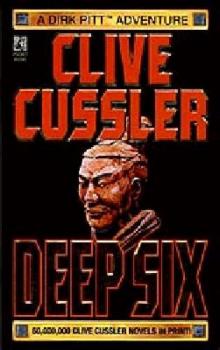 Deep Six
Deep Six Odessa Sea
Odessa Sea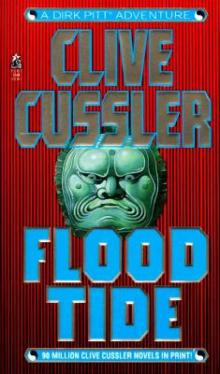 Flood Tide
Flood Tide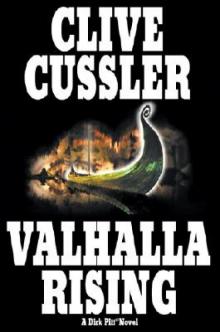 Valhalla Rising
Valhalla Rising Thriller 2
Thriller 2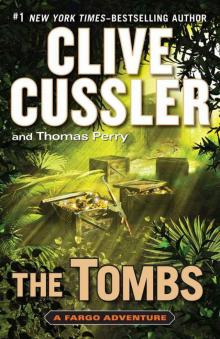 The Tombs
The Tombs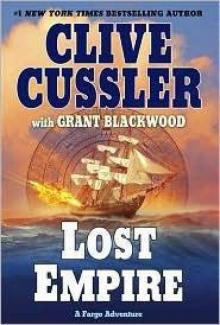 Lost Empire
Lost Empire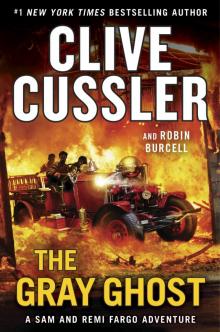 The Gray Ghost
The Gray Ghost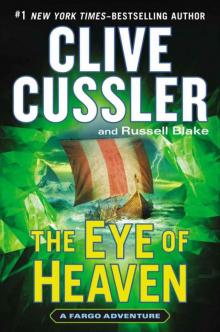 The Eye of Heaven
The Eye of Heaven Polar Shift
Polar Shift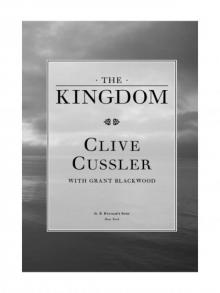 The Kingdom
The Kingdom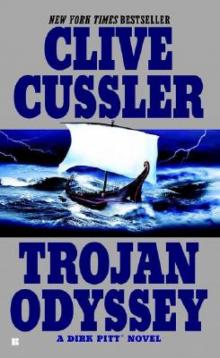 Trojan Odyssey
Trojan Odyssey Shadow Tyrants
Shadow Tyrants Nighthawk
Nighthawk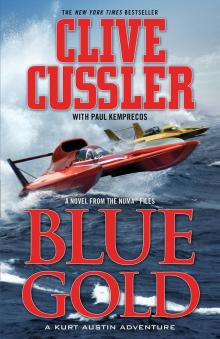 Blue Gold
Blue Gold Serpent
Serpent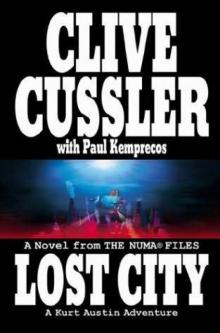 Lost City
Lost City The Gangster
The Gangster White Death
White Death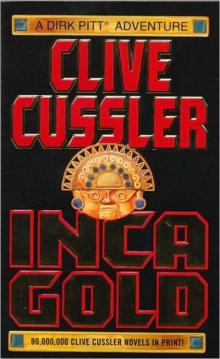 Inca Gold
Inca Gold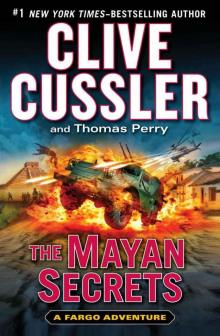 The Mayan Secrets
The Mayan Secrets The Pharaoh's Secret
The Pharaoh's Secret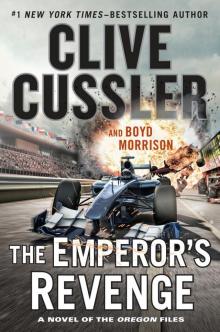 The Emperor's Revenge
The Emperor's Revenge Corsair
Corsair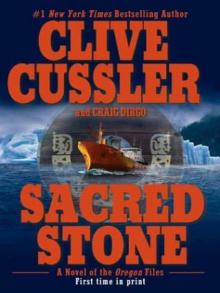 Sacred Stone
Sacred Stone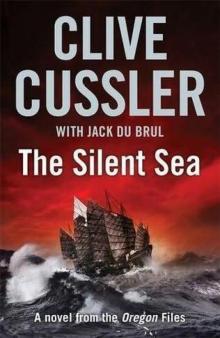 The Silent Sea
The Silent Sea The Rising Sea
The Rising Sea Black Wind
Black Wind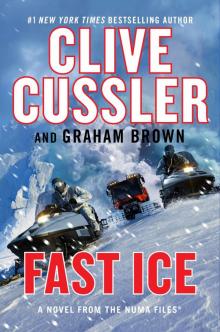 Fast Ice
Fast Ice Ghost Ship
Ghost Ship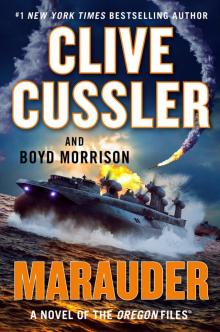 Marauder
Marauder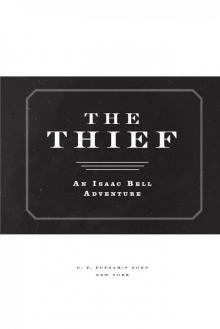 The Thief
The Thief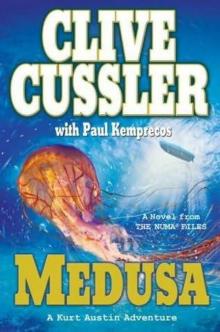 Medusa
Medusa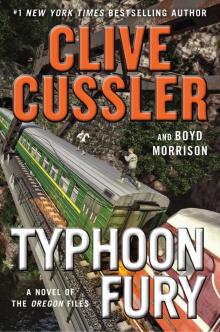 Typhoon Fury
Typhoon Fury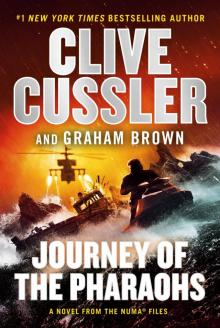 Journey of the Pharaohs
Journey of the Pharaohs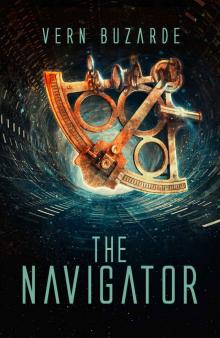 The Navigator
The Navigator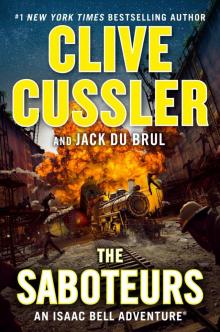 The Saboteurs
The Saboteurs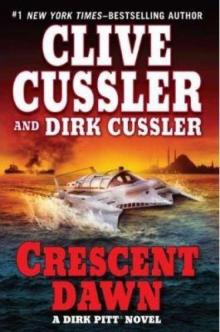 Crescent Dawn
Crescent Dawn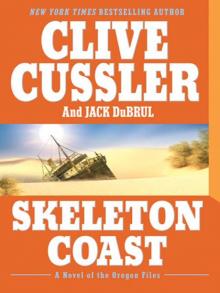 Skeleton Coast
Skeleton Coast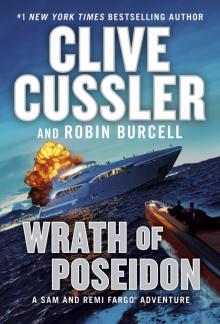 Wrath of Poseidon
Wrath of Poseidon The Mediterranean Caper
The Mediterranean Caper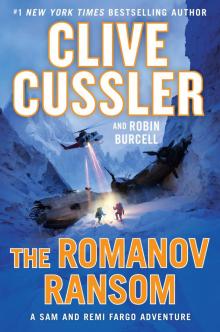 The Romanov Ransom
The Romanov Ransom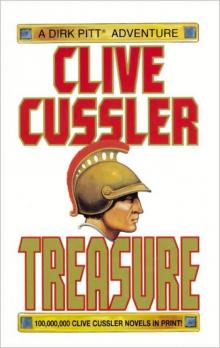 Treasure
Treasure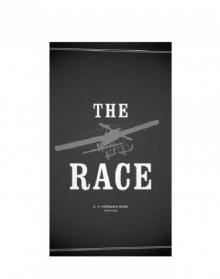 The Race
The Race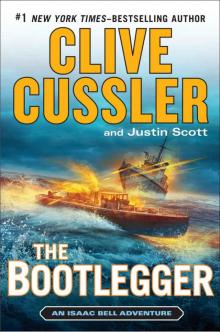 The Bootlegger
The Bootlegger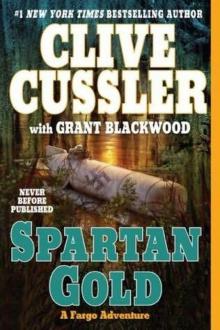 Spartan Gold
Spartan Gold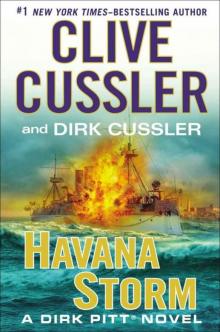 Havana Storm
Havana Storm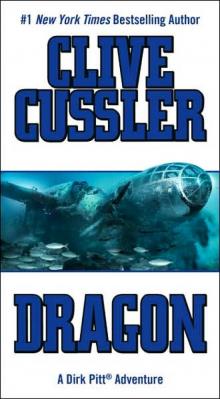 Dragon
Dragon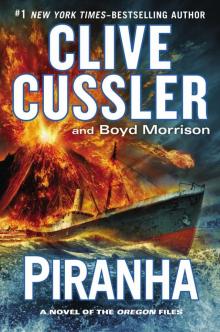 Piranha
Piranha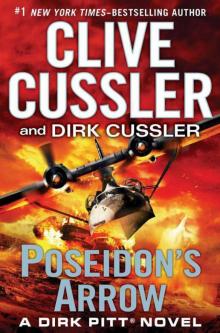 Poseidon's Arrow
Poseidon's Arrow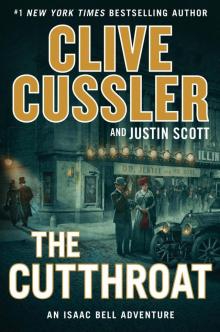 The Cutthroat
The Cutthroat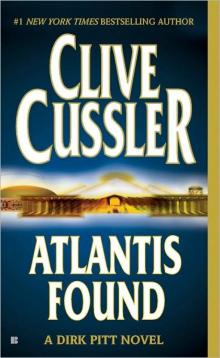 Atlantis Found
Atlantis Found The Jungle
The Jungle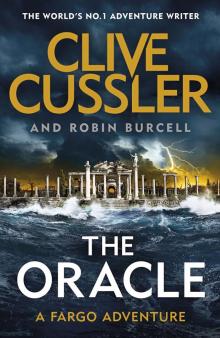 The Oracle
The Oracle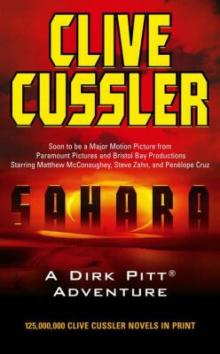 Treasure / Dragon / Sahara: Clive Cussler Gift Set
Treasure / Dragon / Sahara: Clive Cussler Gift Set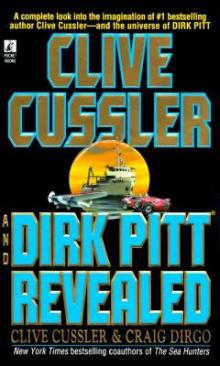 Clive Cussler and Dirk Pitt Revealed
Clive Cussler and Dirk Pitt Revealed The Sea Hunters
The Sea Hunters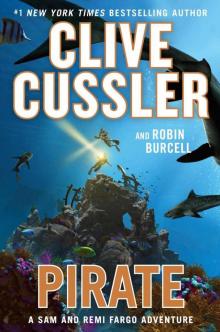 Pirate
Pirate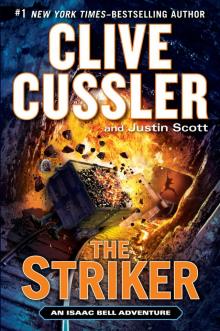 The Striker
The Striker Plague Ship
Plague Ship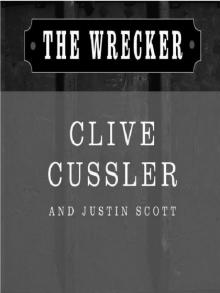 The Wrecker
The Wrecker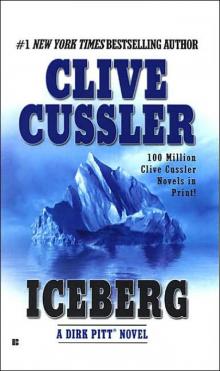 Iceberg
Iceberg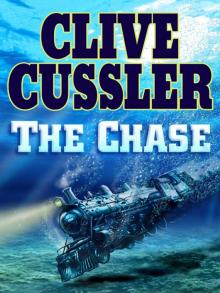 The Chase
The Chase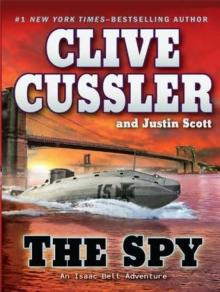 The Spy
The Spy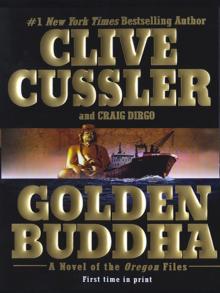 Golden Buddha
Golden Buddha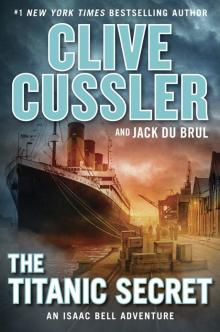 The Titanic Secret
The Titanic Secret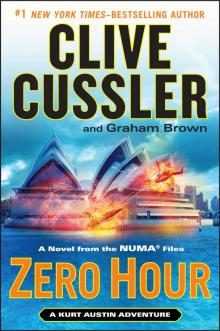 Zero Hour
Zero Hour Fire Ice
Fire Ice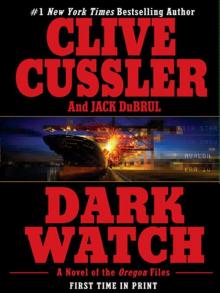 Dark Watch
Dark Watch The Storm
The Storm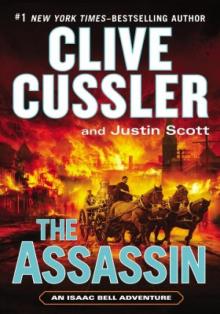 The Assassin
The Assassin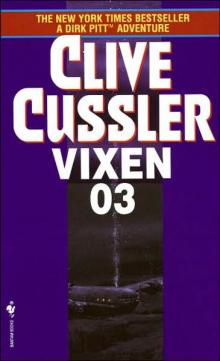 Vixen 03
Vixen 03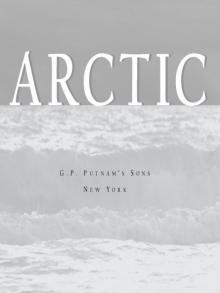 Arctic Drift
Arctic Drift Night Probe!
Night Probe! Cyclops
Cyclops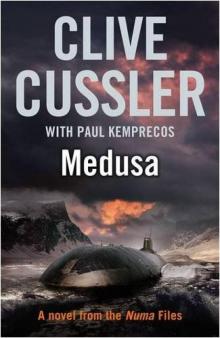 Medusa nf-8
Medusa nf-8 Shock Wave dp-13
Shock Wave dp-13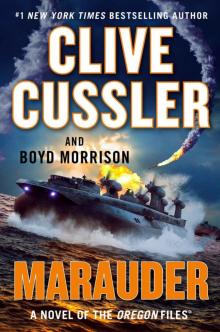 Marauder (The Oregon Files)
Marauder (The Oregon Files)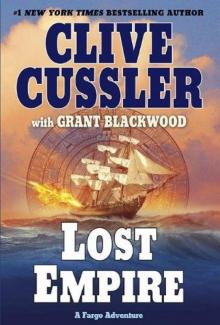 Lost Empire fa-2
Lost Empire fa-2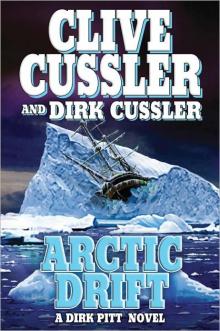 Arctic Drift dp-20
Arctic Drift dp-20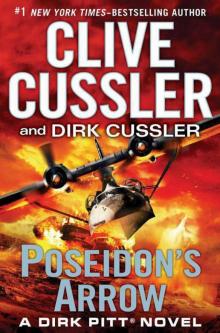 Dirk Pitt 22 - Poseidon's Arrow
Dirk Pitt 22 - Poseidon's Arrow Treasure of Khan dp-19
Treasure of Khan dp-19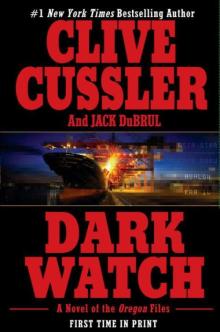 Dark Watch of-3
Dark Watch of-3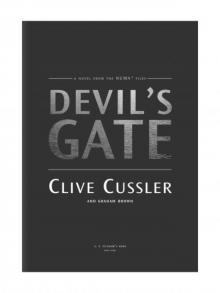 Devil's Gate
Devil's Gate The Sea Hunters II: More True Adventures with Famous Shipwrecks
The Sea Hunters II: More True Adventures with Famous Shipwrecks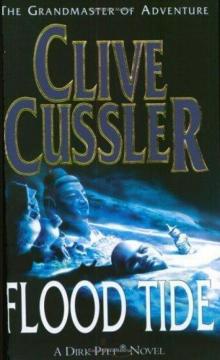 Flood Tide dp-14
Flood Tide dp-14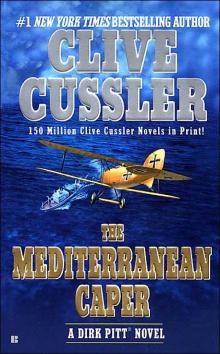 The Mediterranean Caper dp-2
The Mediterranean Caper dp-2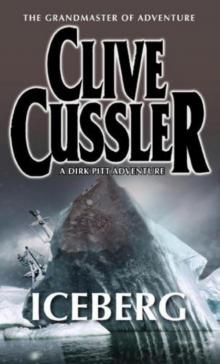 Iceberg dp-3
Iceberg dp-3 Sahara dpa-11
Sahara dpa-11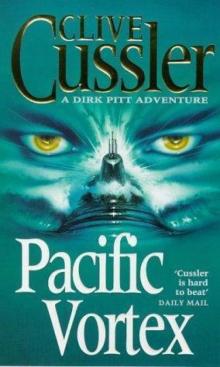 Pacific Vortex! dp-1
Pacific Vortex! dp-1 Deep Six dp-7
Deep Six dp-7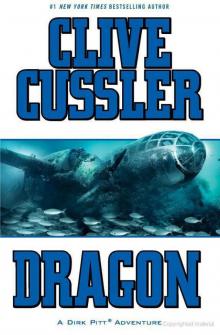 Dragon dp-10
Dragon dp-10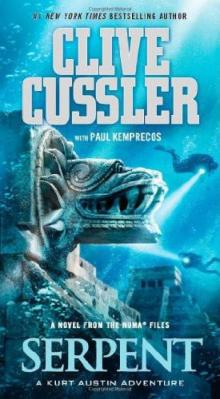 Serpent nf-1
Serpent nf-1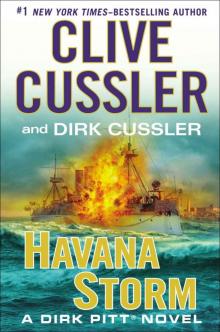 Havana Storm (Dirk Pitt Adventure)
Havana Storm (Dirk Pitt Adventure)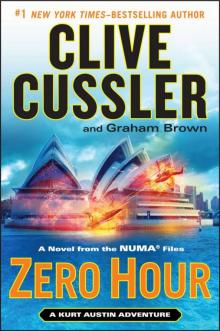 Zero Hour nf-11
Zero Hour nf-11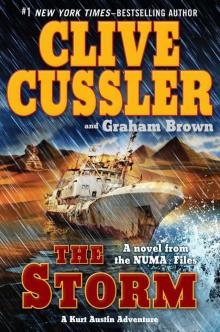 The Storm nf-10
The Storm nf-10 The Thief ib-5
The Thief ib-5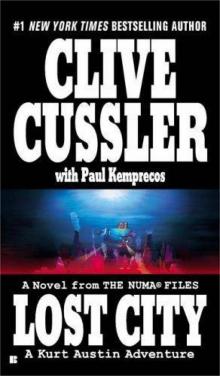 Lost City nf-5
Lost City nf-5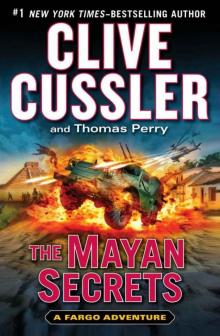 The Mayan Secrets fa-5
The Mayan Secrets fa-5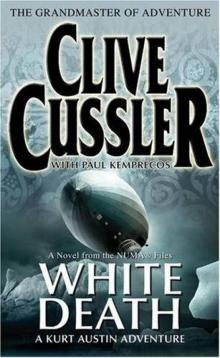 White Death nf-4
White Death nf-4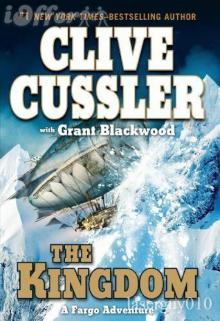 The Kingdom fa-3
The Kingdom fa-3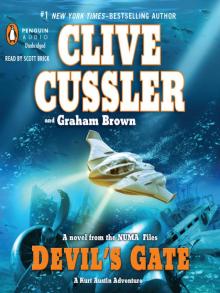 Devil's Gate nf-9
Devil's Gate nf-9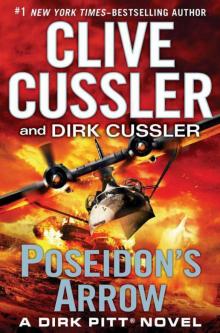 Poseidon's Arrow dp-22
Poseidon's Arrow dp-22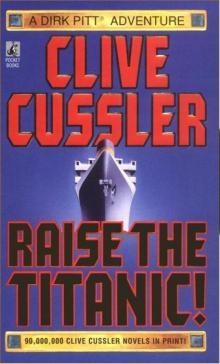 Raise the Titanic dp-4
Raise the Titanic dp-4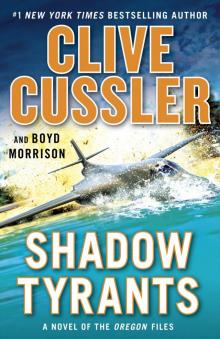 Shadow Tyrants--Clive Cussler
Shadow Tyrants--Clive Cussler Sacred Stone of-2
Sacred Stone of-2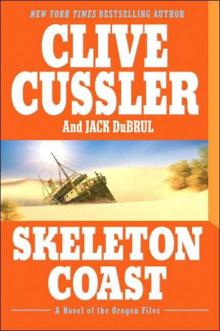 Skeleton Coast tof-4
Skeleton Coast tof-4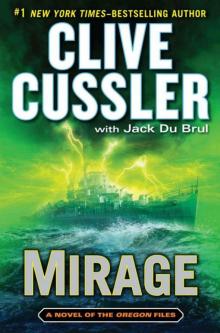 Mirage tof-9
Mirage tof-9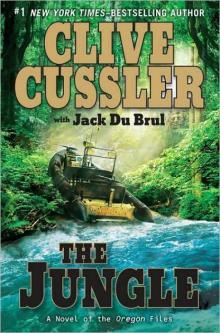 The Jungle of-8
The Jungle of-8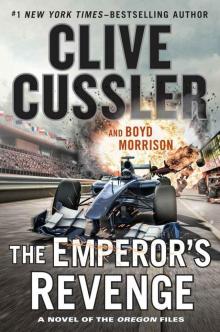 The Emperor's Revenge (The Oregon Files)
The Emperor's Revenge (The Oregon Files)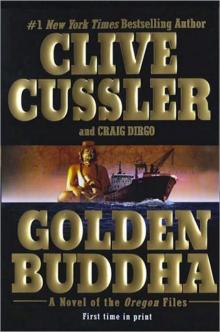 Golden Buddha of-1
Golden Buddha of-1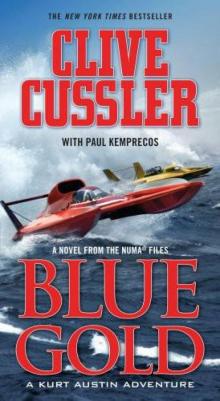 Blue & Gold
Blue & Gold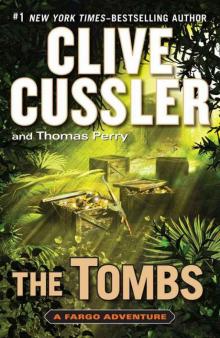 The Tombs fa-4
The Tombs fa-4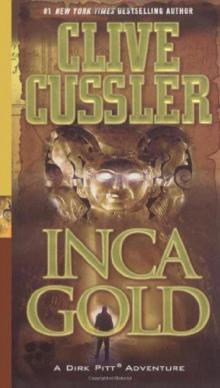 Inca Gold dp-12
Inca Gold dp-12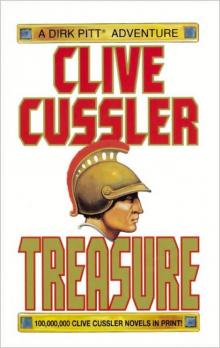 Treasure dp-9
Treasure dp-9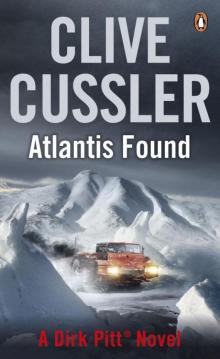 Atlantis Found dp-15
Atlantis Found dp-15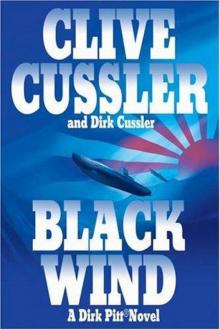 Black Wind dp-18
Black Wind dp-18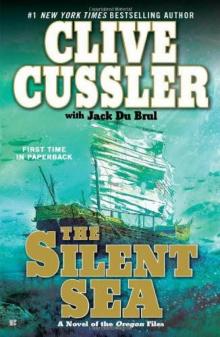 the Silent Sea (2010) tof-7
the Silent Sea (2010) tof-7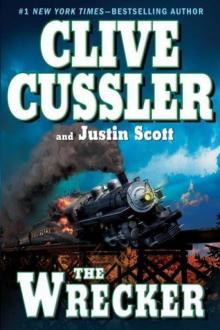 The Wrecker ib-2
The Wrecker ib-2 Fire Ice nf-3
Fire Ice nf-3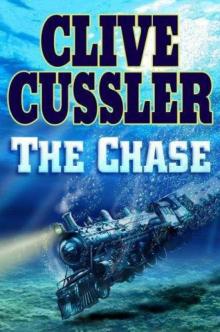 The Chase ib-1
The Chase ib-1 Sahara
Sahara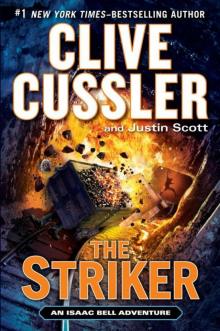 The Striker ib-6
The Striker ib-6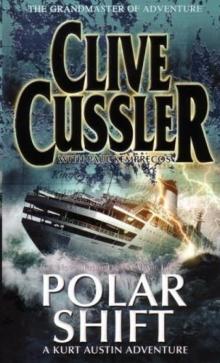 Polar Shift nf-6
Polar Shift nf-6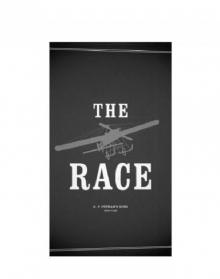 The Race ib-4
The Race ib-4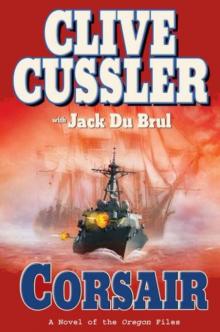 Corsair of-6
Corsair of-6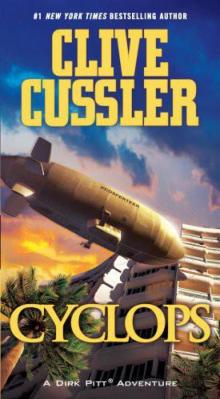 Cyclops dp-8
Cyclops dp-8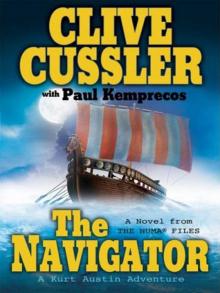 The Navigator nf-7
The Navigator nf-7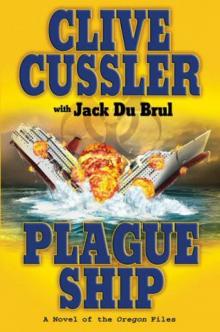 Plague Ship tof-5
Plague Ship tof-5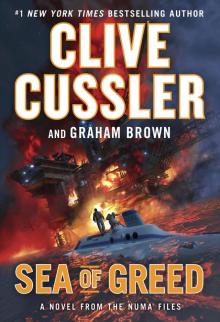 Sea of Greed
Sea of Greed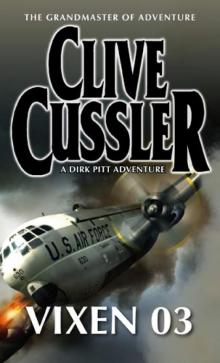 Vixen 03 dp-5
Vixen 03 dp-5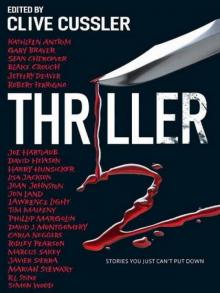 Thriller 2: Stories You Just Can't Put Down
Thriller 2: Stories You Just Can't Put Down